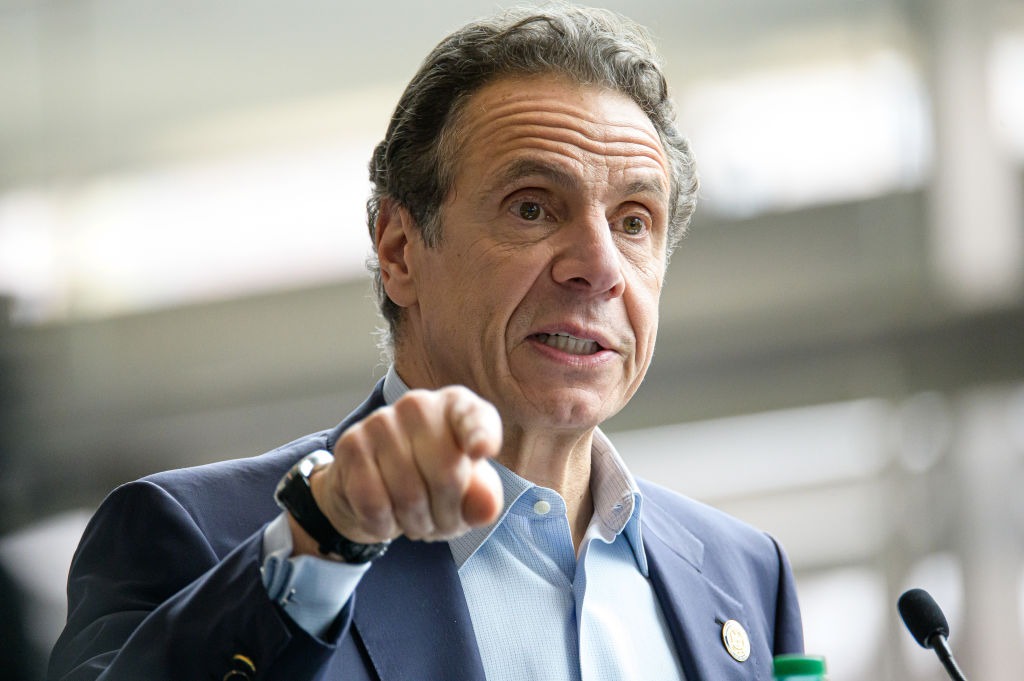Avoid Austerity To Prevent A State And Local Coronavirus Depression
Local budget cuts enacted a decade ago left states and cities dangerously unprepared for COVID-19. We shouldn’t make those same mistakes again.

This piece is a commentary, part of The Appeal’s collection of opinion and analysis.
It may feel like the government is handing out money like crazy these days. Congress just passed a $2.2. trillion stimulus bill responding to the novel coronavirus, though that number may be somewhat inflated. The Federal Reserve is launching multi-trillion dollar lending programs. Meanwhile, state and local governments are mobilizing to provide healthcare and other services during the pandemic.
But beneath the surface austerity looms. On April 2, New York Governor Andrew Cuomo announced that the budget for fiscal year 2021 would include $10 billion in cuts. Shockingly, these cuts are concentrated in healthcare, with billions in cuts to Medicaid. It was “the worst budget in recent memory” according to Jonathan Westin, executive director for New York Communities for Change. “What the hell happened to Democratic control and progressive leadership in Albany?” Westin asked. “It’s Republican austerity warfare against countless low-income New Yorkers who are the most vulnerable to coronavirus.”
Although Medicaid is a federal program, the key issue that defines budgetary politics in the U.S. is the “sharing” between federal, state and local governments in funding specific programs. Programs ranging from unemployment insurance to Medicaid to infrastructure projects rely on a combination of federal and state financing. Like a copayment when you see the doctor, this “cost-sharing” is meant to create incentives for state and local governments to administer programs efficiently and work to prevent fraud. We can argue about whether this kind of incentive is necessary or effective in normal times, but in recessions it is disastrous.
The problem is that recessions increase government spending as unemployment rises. More people qualify for programs like Medicaid as incomes and retail sales—two major sources for state tax revenues—decline. The federal government can handle a larger deficit in recessions, but state and local governments cannot maintain budget deficits. Many states have balanced budget amendments, while municipal debt markets are relatively inactive and have few participants.
Austerity policies enacted during the Great Recession created such long-lasting damage that the labor market had only recently begun recovering when coronavirus hit. States slashed budgets so severely that in 2008 New York Times columnist and economist Paul Krugman referred to their governors as “50 Herbert Hoovers.”
Louisiana is a case study in the dangers of austerity. After Bobby Jindal came into office in January 2008, he made steep budget cuts. By 2015, he had cut $4 billion—about 14%—of the budget. Jindal shrunk the state workforce by 28,000, which hit state hospitals hard. So when coronavirus began its spread, hospitals were already radically understaffed, and the hospital privatizations Jindal initiated made healthcare even less accessible for ordinary Louisianans. Today Louisiana is an epicenter of COVID-19.
Austerity at the state and local level means that we’re in danger of a prolonged economic downturn far after the worst effects of the pandemic are over. To avoid this fate, the federal government should cover expenses like healthcare and unemployment insurance during downturns.
A federally funded, universal health care program like Medicare for All could relieve the costs of healthcare from state budgets and ensure adequate funds are available during a pandemic.
Under the CARES Act, the federal government will fully pay for the expansion of unemployment insurance benefits—but state governments are mostly still responsible for covering base benefits, even as a record 12 million Americans received unemployment benefits in the first week of April. The Families First Coronavirus Response Act provides some $1 billion to state unemployment insurance trust funds, but this is a drop in the bucket compared to the wave of unemployment insurance claims that have rocked state unemployment systems. The CARES Act allocates $340 billion to state and local governments, or about $1,000 dollars per person. Incomes and sales have likely dropped by far more on a per-person basis than that.
On April 9, the Federal Reserve announced that it would launch a $500 billion state and local government debt-buying program. In essence, the Federal Reserve will print money to help state and local governments stay financially afloat during the pandemic. The move may ease the pressure to slash budgets, but it is no replacement for spending and grants from another federal stimulus package.
What’s more, the program is limited and only extends to cities with more than 1 million inhabitants. Detroit, which has been devastated by COVID-19, would not qualify for the program because fewer than 1 million people live within its city limits, even though 4 million reside in its metropolitan area. The exclusion of small to mid-sized cities with large suburban populations excludes all of the 35 cities with the highest Black populations.
The Fed should expand this program and make long-term commitments to support local and state borrowing. But even that won’t stop some local politicians from pursuing budget cuts. There is often a deep ideological belief in the virtue of balanced budgets, and politicians likely have legitimate concerns about being reliant on a federal agency that could withdraw support at any time.
Cuomo’s $177 billion budget was enacted on April 3, but cuts to Medicaid were delayed in order for the state to access billions in matching federal funds. This doesn’t mean that the specter of austerity has been removed from New York’s budget: as the full scope of the coronavirus-induced economic collapse becomes apparent, we’re likely to see deeper cuts by state and local governments. As large as the rescue numbers coming out of Washington, D.C. may appear, they need to be increased simply to offset or prevent shrinking state and local budgets.
Nathan Tankus is Research Director of the Modern Money Network. He has written for the Financial Times, Business Insider, JSTOR Daily and Jacobin and regularly writes his own newsletter.
